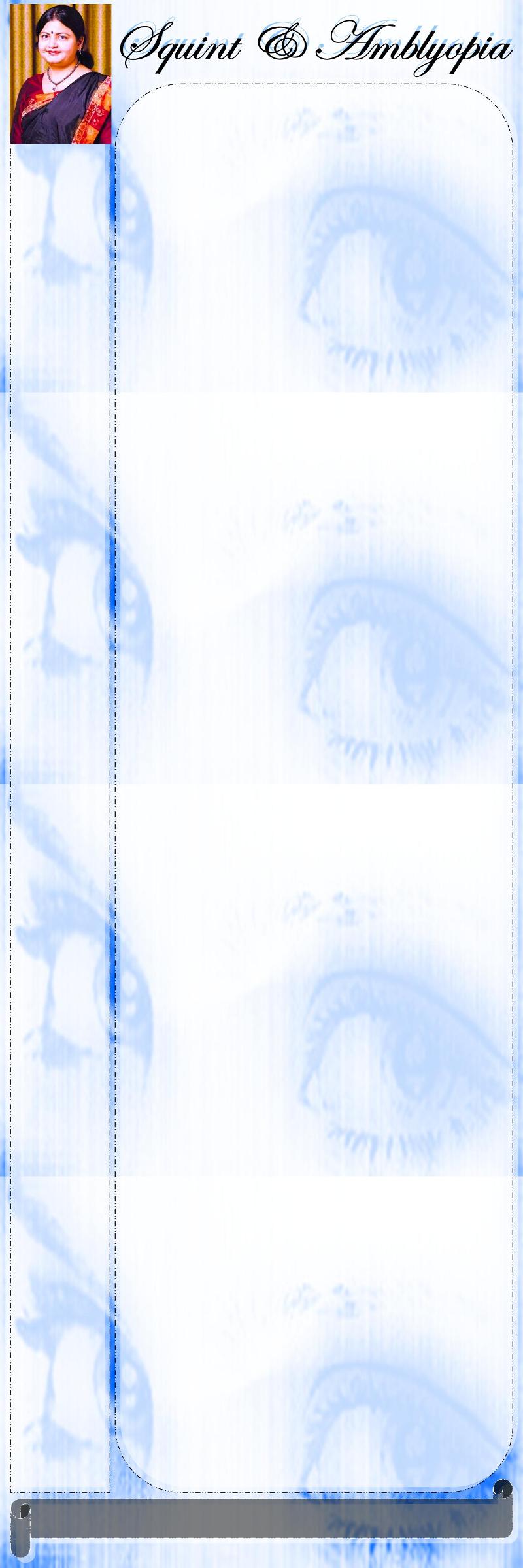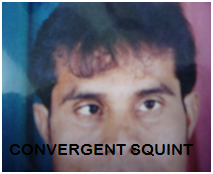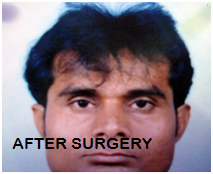SQUINT
It is a visual defect in which the eyes are misaligned and point in different directions.
CLASSIFICATION OF SQUINT
It may be convergent –whereby the eye turns inwards
(esotropia), divergent –whereby the eye turns
outwards (exotropia) or in a vertical direction
–If upwards then (hypertropia), and if downwards
then (hypotropia). It may be present all the time
(constant), or comes and goes (intermittent).
Again it may be manifest- Whereby the affected eye
turns when the eyes are open and being used or
latent – whereby the eye turns only when it is
covered or shut but looks fine when the eyes are
open. At times, the angle (degree) of the squint
is always the same in every direction that you
look or may vary in different directions. With
normal binocular vision, the eye produces
3-dimensional image. Because of the squint, there
is loss of the depth and perception of binocularity.
If the squint is not treated in childhood the visual
defect becomes permanent causing Amblyopia whereby
the visual loss is irreversible.
CAUSES
Most of the squint cases are usually inborn=congenital or develops in early years of life. If it develops later in life it is usually due to some secondary pathology.
- Genetic- it runs in families
- Uncorrected refractive errors like myopia, hyperopia, and astigmatism-due to improper focusing of light rays on retina.
- Systemic conditions –cerebral palsy, hydrocephalus, and cranial dystosis causing misalignment of the visual axis.
- Corneal pathology, Cataract, Retinal pathology causing obstructive vision.
AMBLYOPIA
Amblyopia is a condition where the vision in an eye is poor and it is caused by lack of use of the eye in early childhood. It is sometimes called a 'lazy eye.' The visual loss of amblyopia cannot be corrected by wearing glasses at a later stage. Amblyopia is usually treated by patching the good eye to force the use of the affected eye. However, if it is treated before the age of about seven-nine years, the visual system is still developing and so the visual impairment doesn’t remain permanent. The development of equal vision in both eyes is necessary for the normal binocular vision and depth perception.
DETECTION AND DIAGNOSIS
- Usually it is cosmetic.
- Impaired binocular vision.
Routine checkups should be done to detect eye problems in babies and children at the new-born stage and at the pre-school or school-entry.
TREATMENT
- To preserve vision-functional
- To straighten eyes-cosmetic
- To restore binocular vision-depth perception.
- Treating amblyopia (visual loss) if this is present.
TREATMENT OPTIONS
- Optical correction by giving proper no. of glasses.
- Orthoptic exercises
- Surgery on the extraocular muscles- by strengthening the weak muscle and weakening the strong muscle.
- Patch therapy for amblyopia
- Correction of any ocular pathology
- Systemic diseases treatment.
WHAT IS THE OUTLOOK ( PROGNOSIS ) ?
As a rule, the younger the child is treated, the quicker the improvement in vision is likely to be, and the better the chance of restoring full normal vision. If treatment is started before the age of about 6-7 years then it is often possible to restore normal vision. If treatment is started in older children then some improvement in vision may still occur but full normal vision is unlikely to be achieved.
COSMETIC - FOR IMPROVING THE APPEARANCE OF THE EYES
Squint surgery usually greatly improves the straightness of the eyes. However, sometimes after an operation the eyes are not perfectly straight. In some cases, two or more operations are needed to get the eyes straight. Also, several years after successful surgery, in some cases the squint may gradually return again. If this occurs, another operation is an option to re-straighten the eyes.



